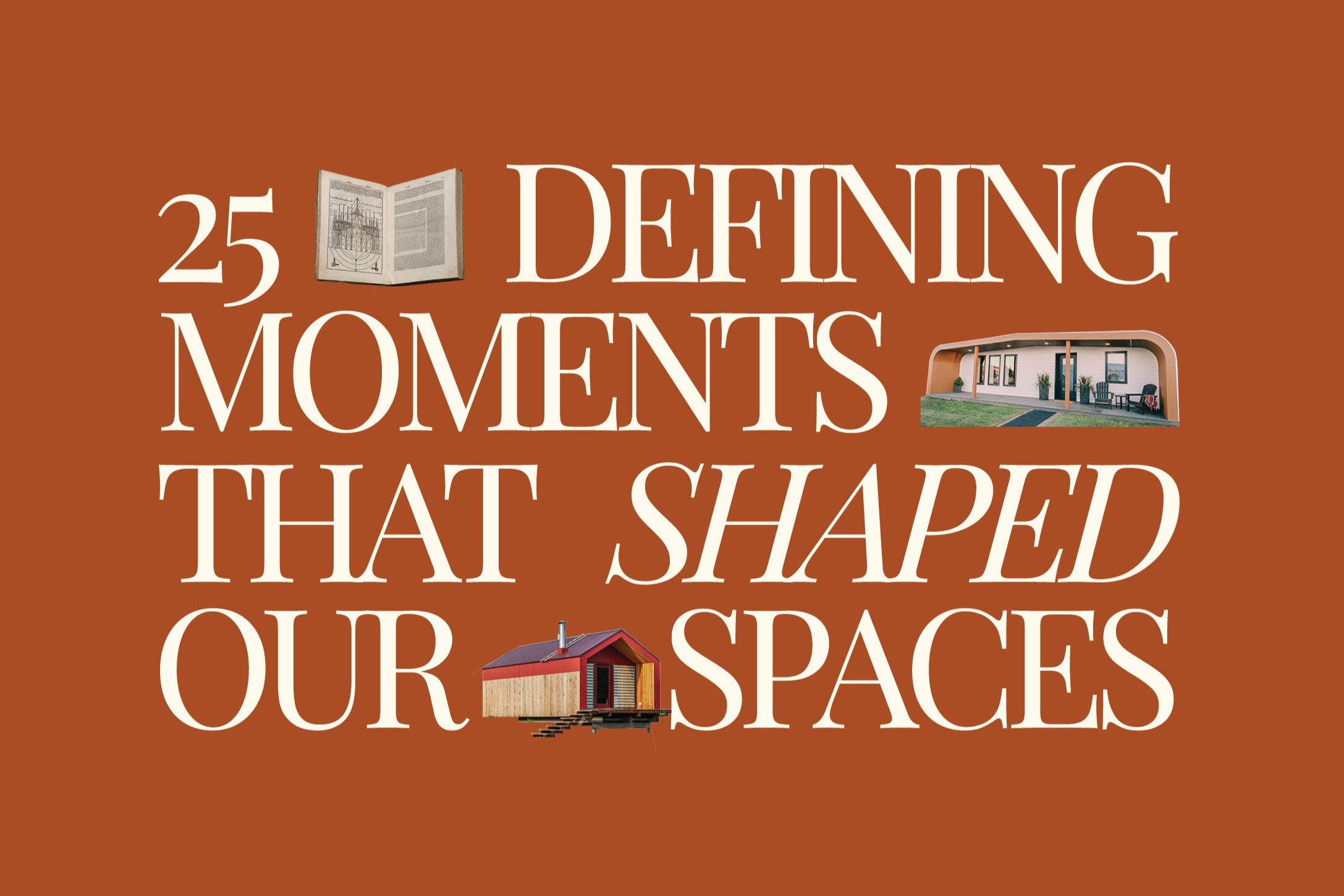01
30,000 BCE
Cave Paintings, Bimbekta, MP
Storytelling through Cave paintings
The earliest known cave paintings, like those found in the Lascaux Caves in France, marked humanity's first attempt at visual storytelling. These depictions of animals and scenes, also seen at Bimbetka Caves, MP, served as a form of communication, laying the groundwork for using art as a medium to convey narratives and emotions. They highlighted the profound connection between design, art, and human expression. In ancient Egypt, wall murals showcased decorative techniques; similarly, India's Ajanta Caves displayed intricate wall paintings depicting religious stories using permanent pigments. These expressions laid the foundation for using art as a medium to convey emotions, narratives, and possibly the earliest form of interior decoration.


Bhimbetka War Scene, Photo by Vidisha Prakash Lascaux Painting
02
3500 BCE
Sanitation, Egypt, Mesopotamia & the Indus Valley
Oldest toilets Over Cesspits
Ancient civilisations in Egypt and Mesopotamia developed early toilets over cesspits, marking a leap in sanitation. Notably, the Indus Valley Civilization in present-day India and Pakistan showcased sophisticated urban planning with advanced drainage systems and toilets connected to underground sewers. These early plumbing advancements underscored design's pivotal role in enhancing public health and urban living. The design principles from these ancient systems have had a lasting impact on urban infrastructure, influencing modern sanitation practices and the integration of functional design into architecture.

Sanitation In Indus, Photo by Haseeb Ur Rehman Malik
03
800 BCE
Chinese Folding Screens, China
Flexible space partitions
During China's Eastern Zhou period, around 800 BC, Chinese folding screens emerged as ingenious design solutions. These flexible wooden screens featured intricate artwork and calligraphy. They offered not only aesthetic elegance but also practical adaptability, allowing spaces to be reconfigured as needed. This design innovation inspired modern ideas of flexible space utilisation and dynamic interior layouts. The concept of folding screens continues to influence contemporary design, inspiring adaptable furniture and spatial arrangements that align beauty with functional versatility.
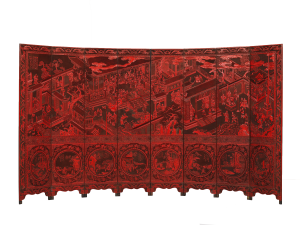
Chinese Lacquer Screen, Photo by Lu Guisheng
04
447 BCE
Parthenon, Greece
Golden Ratio explored
The Golden Section, also known as the Golden Ratio or Phi has been used in art, architecture, and design for centuries. The Parthenon, an ancient Greek temple built in the 5th century BCE in Athens, is one of the most famous examples of the use of the Golden Section. The ratio of the width of the building to its height, as well as the division of the façade and columns, are believed to adhere to this proportion. This has influenced not only the design of the temple but also design principles of later generations. Its enduring appeal as a symbol of aesthetic harmony and proportion has left a lasting legacy in the world of architecture and design.
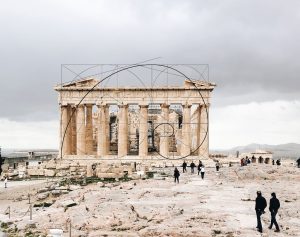
Parthenon, Photo by Iuliia Isakova
05
27 BCE -14 CE
Dome engineering, Hagia Sophia
Largest enclosed interior space
Constructed between 532 and 537 CE, Hagia Sophia in Constantinople (now Istanbul) showcased revolutionary dome architecture. Architects Anthemius of Tralles and Isidore of Miletus ingeniously designed an immense dome that seemingly floats above the interior. This architectural marvel influenced Byzantine and Ottoman construction, setting a precedent for monumental domes globally. Its innovation in creating expansive enclosed spaces redefined spanning, and ultimately interior design possibilities. The legacy of Hagia Sophia reverberates in awe-inspiring structures like India's Gol Gumbaz, exemplifying design's role in shaping monumental spatial experiences.

Hagia Sophia, Photo by Adli Wahi
06
37-15 BCE
Vitruvius's Ten Books on Architecture, Greece
Foundational Design Principles
Vitruvius, a Roman architect and engineer, authored "De architectura," outlining architectural principles around 15 BCE. His writings expounded on durability, utility, and beauty, establishing foundational design tenets. His emphasis on proportion, functionality, and aesthetics has profoundly influenced architectural education and practice. From the Renaissance to modern times, architects like Andrea Palladio and Le Corbusier drew inspiration from his principles, shaping architectural discourses. Vitruvius's enduring legacy underscores design's holistic role in crafting spaces that harmonise form, function, and beauty, enriching architectural creativity across ages. In parallel, ancient Indian Vastu Shastra similarly offered guidelines for spatial harmony and design, reflecting a cross-cultural pursuit of balanced architecture.
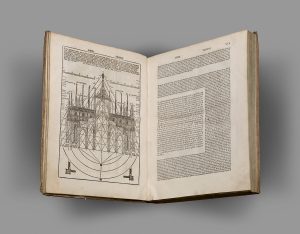
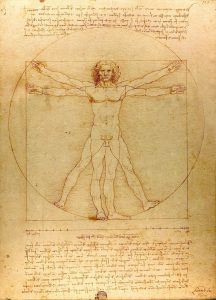
Vitruvius Book, Bequest Of W. Gedney Beatty, 1941 Vitruvian Man, Photo by Lucnix
07
4th Century onward
Stained Glass Windows, Italy
Inviting colours with light
Stained glass paintings are said to have, originated in the Roman era with examples like the Basilica of San Vitale. It revolutionised sacred spaces by infusing vibrant hues and intricate designs into windows, creating awe inspiring illuminated artworks and playing with the sunlight. This innovative use of glass as a medium transformed the ambience of churches and cathedrals, symbolising divine illumination and narrating biblical stories. Stained glass painting set a lasting precedent for integrating art and light into interior architecture, influencing designers to elevate interior spaces with colourful narratives.
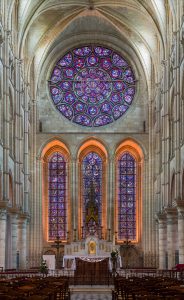
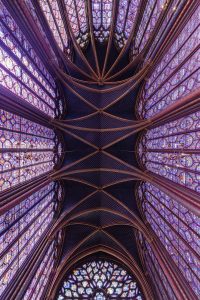
Loan Cathedral, France, Photo by Dilif Stained Glass, Photo by Mitya Ivanov
08
1400–1700
Renaissance Masters, Italy
A Stroke of Genius
The Renaissance was momentous with Masters like Leonardo da Vinci and Michelangelo left a lasting legacy in the realms of art, architecture, and interior design. Their work epitomised the revival of classical design principles, emphasising beauty, proportion, and harmony. The integration of mathematical concepts like the Fibonacci series added an intellectual dimension to aesthetics. This era witnessed a profound shift in how spaces were conceived, adorned with exquisite details, and imbued with a sense of aesthetic perfection. The Renaissance remains a pivotal chapter in the history of design, shaping creative thought for centuries to come.
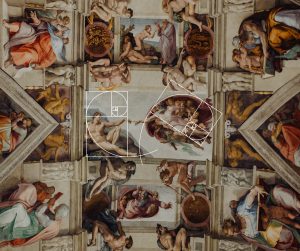
Ceiling Art Of Sistine Chapel, Photo by Calvin Craig
09
1570
First Earthquake-Proof House, Ferrara, Italy
Anti-seismic Architectural Innovation
In 1570, the city of Ferrara witnessed the creation of the first known earthquake-resistant house, designed by architect Pirro Ligorio after the region was hit by a tremendous earthquake. This anti-seismic architectural innovation aimed to mitigate earthquake impact. Subsequently, after the 1819 earthquake in Kutch, India, traditional "Bhunga" huts demonstrated indigenous earthquake-resistant design. These instances underscore the importance of anticipating natural disasters in design, inspiring modern seismic-resistant construction techniques worldwide, and ensuring safety and stability.
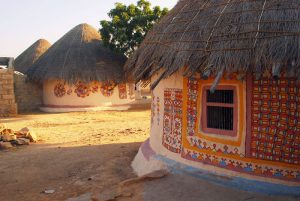

Bhunga Huts, Photo by Nina Sabnan Earthquake Resistant Structure
10
1631/1661
Hall of Mirrors, Lahore and Versailles
Decorative interiors with mirrors
The Hall of Mirrors, crafted in the 17th century, graced Lahore's Sheesh Mahal and the Palace of Versailles. In Lahore, under Mughal rule, the Sheesh Mahal dazzled with intricate mirror work, reflecting Indo-Islamic architectural elegance. In Versailles, designed by Louis Le Vau, the hall epitomised French Baroque splendour with gilded ornamentation and floor-to-ceiling mirrors. These architectural marvels showcased diverse design aesthetics, yet both harnessed reflective surfaces to transform interiors. Their influence echoes in modern interiors that embrace light manipulation and opulence, illustrating the design's mastery of ambience and visual impact.
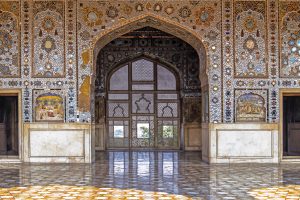
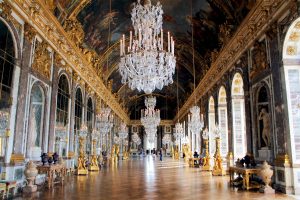
Sheesh Mahal, Photo by Faisal Raza Malik Versailles Galerie, Photo by Myrabella
11
1851
The Crystal Palace, London
The advent of the Industrial Revolution in the built environment
The Crystal Palace Exhibition of 1851 in London was a groundbreaking event in the history of architecture, design, and industry. Its innovative use of glass allowed for vast expanses of open space and natural light, creating a striking and immersive interior environment. It was a testament to the capabilities of industrialisation and mass production. It ushered in an era of transparency, openness, and natural light in interior spaces while promoting innovative building techniques and mass production methods that continue to shape the built environment today.
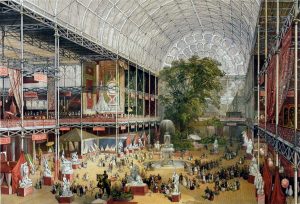
Inside the Crystal Palace, Photo by McNeven. J
12
1872
The Art Journal, Great Britain
First Design Magazine, Dissemination of design ideas
The Art Journal, launched in 1839, became the first design-focused magazine in 1872. This pioneering publication disseminated design ideas globally, nurturing a platform for artistic and creative exchange. Its impact on design discourse and cross-cultural inspiration was profound, paving the way for design magazines that followed. In India, "Marg" (founded in 1946) continues this legacy, highlighting art, culture, and design's role in modern India. Both exemplify how such magazines connect diverse design communities, foster dialogue, and shape aesthetic sensibilities worldwide and locally.These designs reflect a harmonious blend of art and function, influencing architectural marvels from the Middle East to India, highlighting design's ability to transcend borders and time.
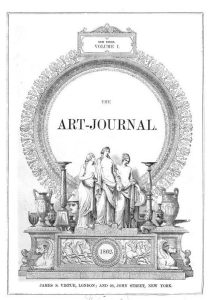

Art Journal Covers
13
18th Century onwards
Isms and Movements in Design and Architecture
The isms of art, architecture and design movements given alongside have contributed to a rich tapestry of design possibilities, allowing architects and interior designers to draw inspiration from various styles and philosophies to create spaces that cater to diverse functional and aesthetic needs.
Neoclassicism
Inspired by classical Greek and Roman orders, it emphasised symmetry, proportion.
Romanticism
Focused on emotional expression and individualism in architecture and design.
Gothic Revival
Revived the medieval Gothic architecture, characterised by pointed arches, ribbed vaults, and ornate decoration.
Arts and Crafts Movement
Advocated for craftsmanship and the use of natural materials, rejecting mass production and industrialisation.
Art Nouveau
Emphasised organic, flowing lines, and intricate ornamentation, often inspired by natural forms.
Bauhaus
Promoted the integration of art, craft, and technology, focusing on functionalism, minimalism, and simplicity.
Art Deco
Known for its geometric shapes, streamlined forms, and luxurious materials, reflecting the Jazz Age.
Modernism
Emphasised simplicity, functionality, and a break from historical ornamentation.
Postmodernism
Reacted against the strict functionalism of Modernism, incorporating historical references, diverse materials, and playful forms.
Deconstructivism
Characterised by fragmented, distorted forms that challenge traditional notions of architectural stability and coherence.
Parametricism
Utilises computational design tools to create complex, organic shapes and structures.
Neo-Modernism
A revival of Modernist principles, often with a focus on sustainability and advanced materials.
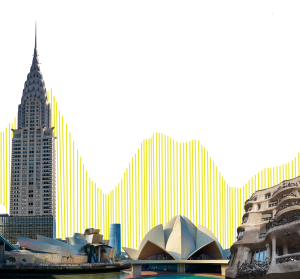
14
1859 - 1950
Elsie de Wolfe, New York
Pioneer in Home Interior Design
Elsie de Wolfe emerged as a pioneer in interior design. Often referred to as "Lady Mendl," she revolutionised interior aesthetics by championing simplicity, comfort, and functionality. Her iconic designs, like the interiors of New York's Colony Club, embraced light, pastel palettes, and eclectic yet harmonious arrangements. De Wolfe's advocacy for design as a reflection of one's lifestyle and personality marked a turning point, shaping modern interior design principles and influencing subsequent generations of designers worldwide.


15
Mid-19th century
The Invention of the Elevator, United States
Revolutionising vertical connectivity and influencing the height of a building
The mid-19th century saw the invention of the elevator, a pivotal moment revolutionising vertical connectivity within buildings. Elisha Otis's safety brake (1853) made tall structures feasible, shifting urban landscapes skyward. This innovation not only facilitated convenience but also transformed architectural possibilities, giving birth to skyscrapers and reshaping city skylines globally. Elevators symbolise design's role in shaping urban form, functionality, and efficiency, enabling dynamic vertical movement within modern built environments.
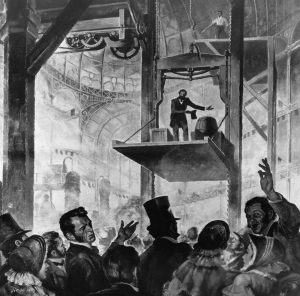
Elisha Otis 1854, Copie De Gravure Ancienne
16
Early 20th-century
The Invention of Air Conditioning, United States
Controlling Comfort in Interior Design
The early 20th century witnessed the invention of air conditioning, that transformed interior comfort. Willis Haviland Carrier's invention (1902) redefined living and working environments, enabling precise temperature control and humidity regulation. This breakthrough led to not only enhanced comfort but also reshaped architectural design. Air conditioning enabled larger windows, flexible layouts, and year-round usage of spaces. Its influence on architectural and interior design continues to emphasise design's pivotal role in creating optimal and adaptable environments for human well-being.

Willis Carrier With The World's First Air Conditioner, Carrier Corporation
17
1923
Towards a New Architecture, Worldwide
Le Corbusier’s discourse on ‘House as a Machine for Living in’
Le Corbusier, a pioneering modernist architect and urban planner, made significant contributions to the field of architecture. "Towards a New Architecture" (published in French as "Vers une architecture" in 1923) introduced several innovative architectural concepts that had a profound influence not only on architecture but also on interior design. One of his key ideas was the notion of the "house as a machine for living in," which revolutionised the way designers approached the built environment by promoting functionalism, minimalism, flexibility, and user-centred design principles.

Le Corbusier, Villa Savoye, Poissy, France
18
1946
Charles and Ray Eames, Worldwide
Iconic Furniture Design
In 1946, Charles and Ray Eames emerged as icons of furniture design. Their innovative use of materials and functional aesthetics redefined modern furniture. The Eames Lounge Chair (1956) epitomised their approach, blending comfort, form, and craftsmanship. Their designs have left an indelible mark, influencing contemporary furniture's emphasis on both style and usability. The Eameses' legacy endures, demonstrating design's capacity to create pieces that are not just functional but also artistic statements, enriching everyday living with timeless style.


Eames Lounge Chair, Eames Office LLC Charles and Ray Eames, Eames office LLC
19
1960s
Computer-Aided Drafting, Worldwide
Digital Design Transformation
The 1960s heralded a digital design transformation with the advent of Computer-Aided Drafting (CAD). Ivan Sutherland's "Sketchpad" (1963) revolutionised design processes, introducing digital tools for architectural and engineering drawings. CAD's evolution empowered designers with precision, efficiency, and visualisation capabilities. Its impact on design is profound, from streamlined planning to virtual prototyping. CAD's continuous advancements have fundamentally reshaped how architects and designers conceptualise and communicate ideas, emphasising design's integration with technology, and enabling innovative solutions across Industries.

Skecthpad, Ivan Sutherland
20
2000s
Tiny House Movement, Worldwide
Compact and Sustainable Living
In the 2000s, the Tiny House Movement gained momentum, advocating compact, efficient, and sustainable living. Influenced by Henry David Thoreau's minimalist ethos, tiny homes prioritise functionality over excess. The movement's pioneers, like Jay Shafer, popularised ingenious small dwellings, emphasising minimal ecological footprint. This movement aligns with design's power to rethink spatial norms, encouraging environmentally conscious living solutions. As urbanisation grows, the Tiny House Movement serves as a reminder that thoughtful design can address space constraints while promoting sustainable lifestyles, echoing design's role in shaping future urban paradigms.
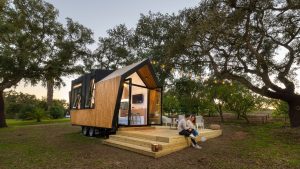
Tiny House, Tinylar
21
2013
Litre of Light Project, Philippines
Bringing affordable and sustainable lighting solutions to communities
By repurposing plastic bottles filled with water and bleach, the project created solar-powered light bulbs that refract sunlight into indoor spaces during the day. This simple yet effective design innovation has had a profound impact on millions of lives, providing safe, eco-friendly illumination to underserved areas globally. The "Liter of Light" project showcases the power of design to address social and environmental challenges, inspiring a new wave of socially conscious design practices.

Litre of Light Project, Photo by Luke Duggle
22
2019-20
COVID-19 Pandemic Effects, Worldwide
Reshaping Design Priorities
The 2020s witnessed the profound effects of the COVID-19 pandemic, reshaping design priorities across the globe. Designers rapidly responded to changing needs, crafting solutions like modular healthcare facilities, contactless interfaces, and adaptive public spaces. The pandemic highlighted design's adaptability and resilience, emphasising the importance of creating flexible and safe environments. As design navigates the new normal, it underscores the field's capacity to address unforeseen challenges and fostering innovation that enhances the way we live, work, and interact.

Outside but Inside in COVID, Photo by Alexis Fauvet
23
2022
BioHome3D, University of Maine
Sustainable 3D-printed Bio-based Houses
The University of Maine's 2022 unveiling of BioHome3D showcased an innovative approach to sustainable housing. Leveraging 3D printing technology, the project focused on constructing bio-based houses with reduced environmental impact. By using bio-based materials and additive manufacturing techniques, BioHome3D demonstrated design's potential to create eco-friendly, efficient, and affordable housing solutions. This initiative reflects the evolving role of design in shaping the future of construction, emphasising sustainability and cutting-edge technology in addressing global housing challenges.
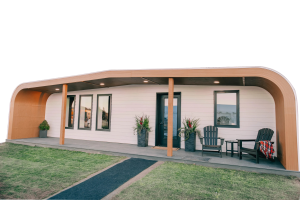
3DBioHome, University of Maine
24
21st century
UX Design Evolution and Social Media, Worldwide
Enhancing Virtual User Experiences
The 21st century witnessed a remarkable evolution in User Experience (UX) design, transforming virtual user interactions across platforms, notably through social media. UX designers prioritise intuitive interfaces, seamless navigation, and personalised experiences. Social Media giants like Facebook and Instagram continually refine their interfaces, optimising user engagement. This evolution underscores design's profound influence on enhancing digital interactions, fostering meaningful connections, and shaping user behaviours and interactions in the virtual world. As technology evolves, UX design and the unending variety of applications and platforms continue to play a pivotal role in creating user-centric, engaging, and accessible virtual experiences.

25
2023
Artificial Intelligence, Worldwide
Blurring Human-Machine Creativity Boundaries
In 2023, AI-generated art took centre stage, blurring the boundaries between human and machine creativity. Artificial intelligence algorithms, like GANs, produce artwork ranging from paintings to music to rooms. This phenomenon challenges traditional notions of authorship and creativity, sparking debates on the essence of artistic expression. The rise of AI-generated art reflects design's capacity to harness technology's potential, reshaping creative landscapes and prompting philosophical discussions about the nature of creativity and the role of design in the digital age. As seen from Rishabh Wadhwa's thought-provoking article that highlights design's role in fostering critical discussions about the intersection of technology and creativity. He emphasises on AI's power to shape not only aesthetics but also the broader cultural and philosophical dimensions of AI-generated art and design in the modern era.





